On February 27, under the guidance of China International Communications Group(CICG), China Foreign Affairs University, and the Publicity Department of the CPC Guangxi Zhuang Autonomous Region Committee, the “Top Ten News Stories on 2024 China-ASEAN Cooperation” release event was co-hosted by the CICG Asia-Pacific , the Institute of Asian Studies of the China Foreign Affairs University, and Guangxi University. The event was organized by the China-ASEAN Research Institute, Research Institute for Innovation and Development and the China-ASEAN School of Economics at Guangxi University. Li Guozhong, Secretary of the Party Committee of Guangxi University , attended the event and delivered a welcome speech. Xia Guoen, Member of the Standing Committee of the Party Committee and Vice President of Guangxi University, hosted the event. Gao Anming, Editor-in-Chief of the China International Communications Group (CICG); Li Pan, Deputy Director of the Publicity Department of the CPC Guangxi Zhuang Autonomous Region Committee; Taing Sokngorn, Consul General of Consulate General of Cambodia in Nanning; Gao Fei, Vice President of the China Foreign Affairs University, and Liang Yiguang, Deputy Secretary-General of the China-ASEAN Expo Secretariat, attended the event and delivered speeches.
Li Guozhong stated that the release of the “Top Ten News Stories on 2024 China-ASEAN Cooperation” not only showcases the achievements of bilateral cooperation over the past year but also looks forward to a shared future and deepened cooperation, injecting new energy into the construction of a China-ASEAN community of shared future. Guangxi University is committed to implementing the international development strategy of “deepening cooperation with ASEAN and openning to the world,” focusing on building a series of distinctive brands for China-ASEAN higher institutions, conducting quality regional studies concentrating on ASEAN, and producing a number of new landmark achievements. He pointed out that Guangxi University will fully leverage its strategic advisory, information consulting, and talent cultivation roles to more effectively serve China-ASEAN strategic cooperation, making new and greater contributions to the building of a closer China-ASEAN community of shared future.
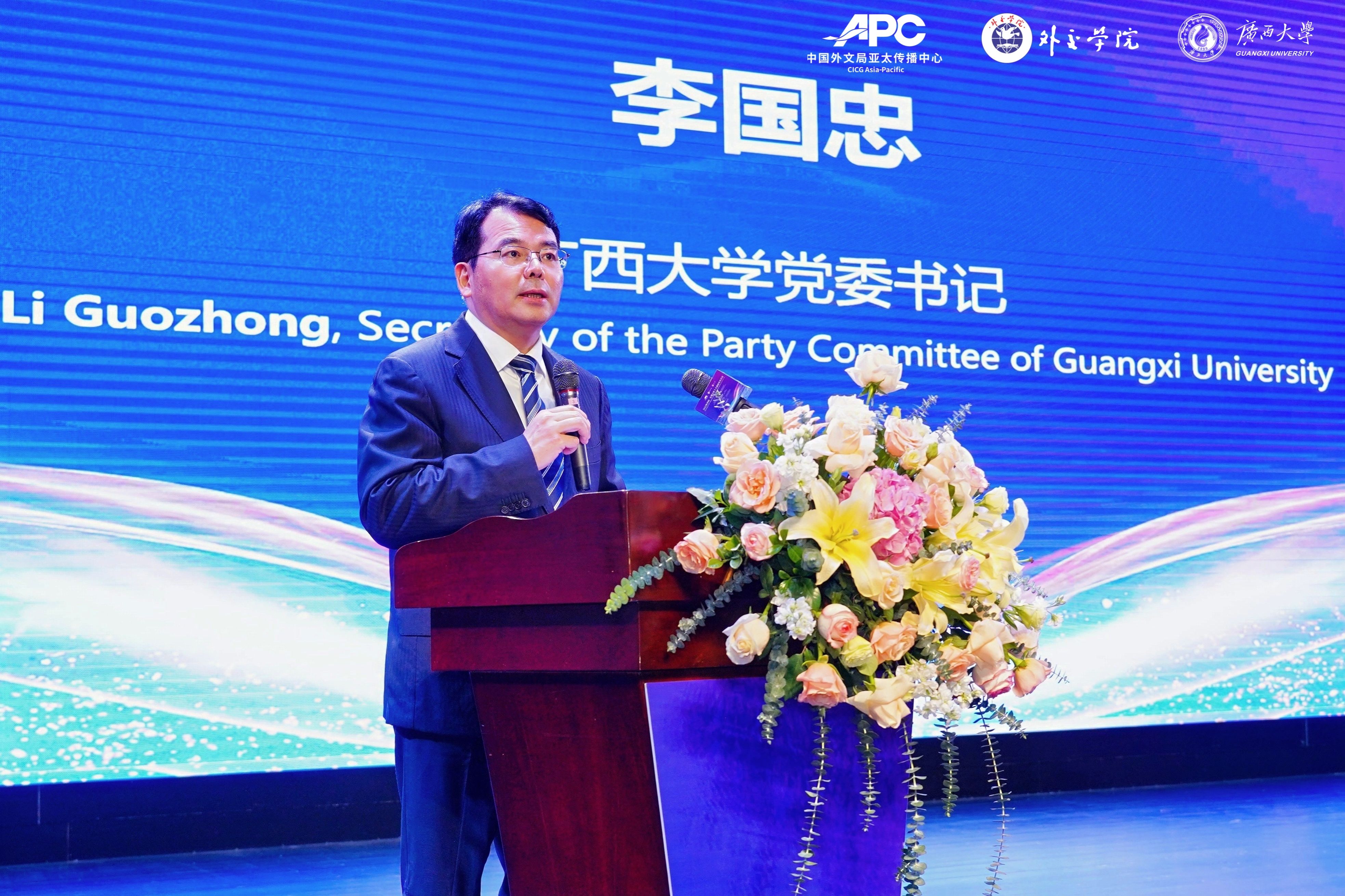
Gao Anming emphasized that China and ASEAN represent the most dynamic regions in the world today. Despite increasing global development uncertainties, China and ASEAN always support each other and solidify the relationship. He suggested both sides should, firstly, enhancing media collaboration to create a diverse communication framework that allows more people to learn about the fruitful results of China-ASEAN cooperation, thereby fostering a better international public opinion environment; secondly, promoting think tank exchanges to deepen policy communication and recommendations, providing more scientific support for bilateral cooperation, and supporting regional cooperation to advance to a higher level; and lastly, facilitating youth exchanges to strengthen the foundation of mutual understanding, engaging more aspiring young people in the cause of China-ASEAN friendship to contribute their youthful energy to regional prosperity.

Li Pan remarked that Guangxi, as a front-line window for China's open cooperation with ASEAN, has actively expanded its international media “network”, establishing partnerships with over 60 media outlets from 38 Belt and Road Initiative countries and regions. Guangxi has collaborated with ASEAN media to co-host programs, jointly produce content, and promote comprehensive media cooperation; and continuously organize cultural exchange activities such as the China-ASEAN Media Week, Music Week, Drama Week, and Film Culture Week, injecting Guangxi’s wisdom and strength into building a closer China-ASEAN community with a shared future. He suggested both sides should deepening communication cooperation to promote neighborly friendship, enhancing technological innovation to lead media development, and facilitating talent exchanges to foster regional prosperity, further consolidating consensus and pooling strength.
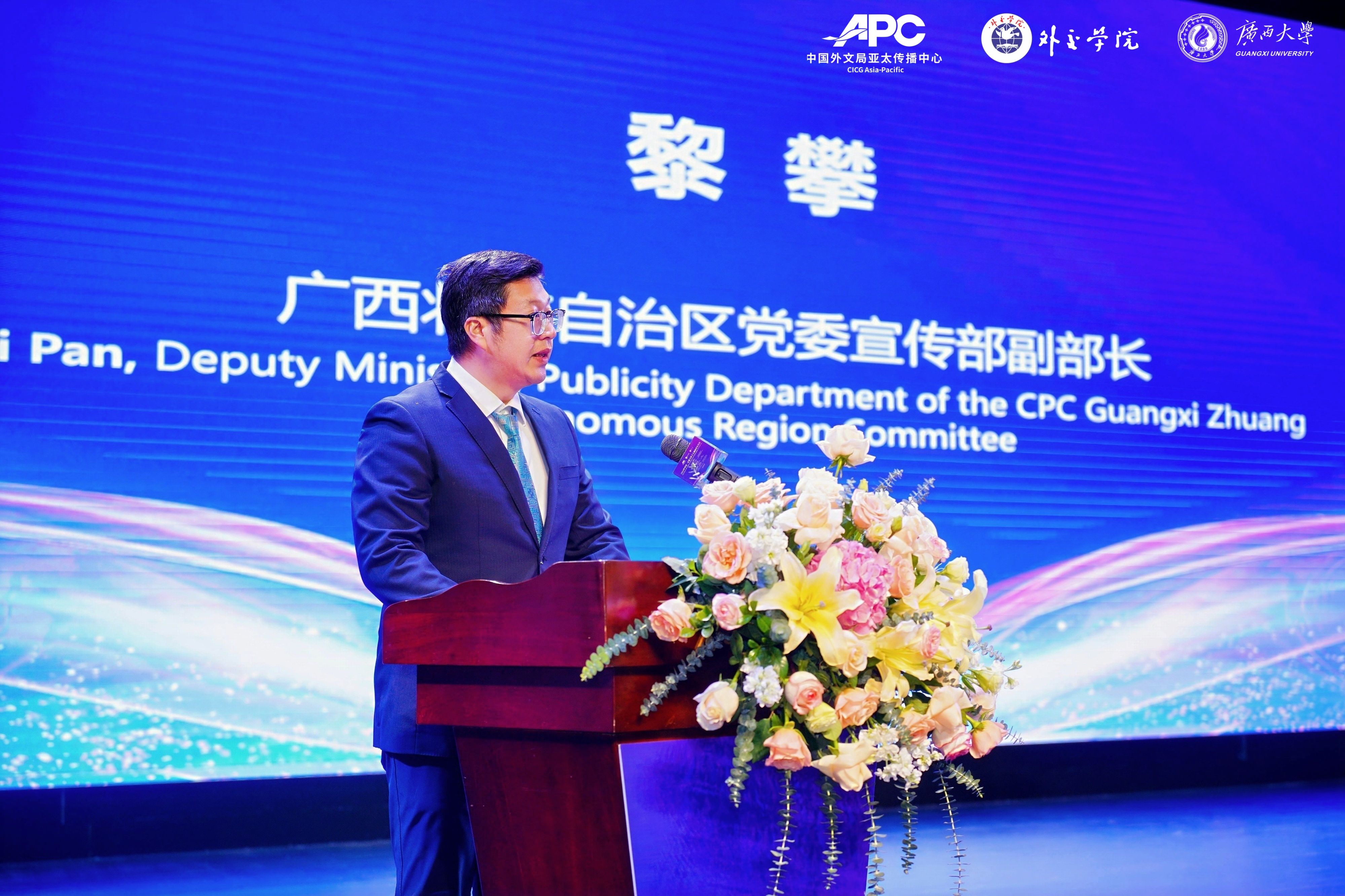
Taing Sokngorn noted that under strategic guidance and the efforts of all sectors, Cambodia and China has strengthened mutual trust in political affairs, steadily improved economic and trade cooperation. Infrastructure and cross-border payment systems have achieved connectivity; cultural and technological exchanges are thriving, and innovation and green cooperation have made new progress. As China’s only province with land and sea borders with ASEAN countries, Guangxi serves as a frontline and window for China-ASEAN exchanges and cooperation. Cambodia and Guangxi complement each other’s strengths, facilitating the construction of Cambodia-China “Diamond Six-Sided” Cooperation Framework. He hopes both sides can deepen collaboration in fields such as trade investment, agricultural development, digital economy, green development, and cultural exchanges, promoting the co-creation of a high-quality, high-level, and high-standard China-Cambodia community with a shared future in the new era.

Gao Fei stated that the concept of “Community with A Shared Future for All the Mankind” has developed into a broad and comprehensive scientific system. Currently, dozens of countries and regions, including several ASEAN nations, are working with China to establish various forms of such communities. This year, Research Center On Building A Community With A Shared Future For Mankind was officially established at the China Foreign Affairs University. The university will continue to actively fulfill its responsibilities in researching, interpreting, and promoting Xi Jinping’s diplomatic thoughts within the framework of China-ASEAN cooperation. The university aims to enhance quality collaboration on the Belt and Road Initiative and the three global initiatives, complementing and synergizing with the ASEAN community construction, thereby taking concrete actions to build a closer China-ASEAN community with a shared future.
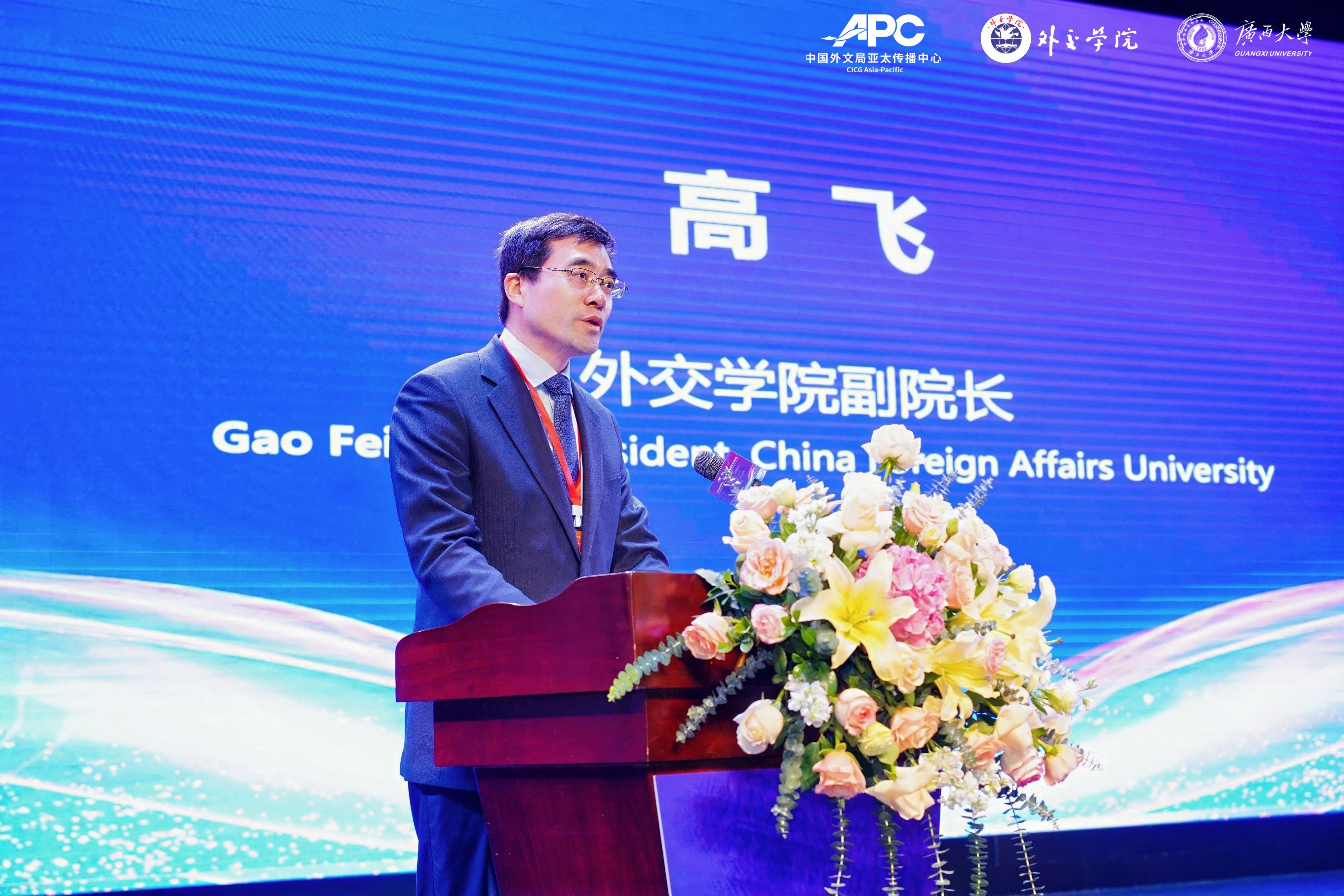
Liang Yiguang stated that since its inception over 20 years ago, the China-ASEAN Expo has grown alongside the China-ASEAN relations and the China-ASEAN Free Trade Area, playing an important role in constructing a closer China-ASEAN community with a shared future. The 22nd China-ASEAN Expo will seize the crucial opportunity of the upcoming signing of the China-ASEAN Free Trade Area Version 3.0 Protocol, focusing on practicality, driven by innovation, market-oriented, and service-supported, to pursue new paths and innovative development, injecting new momentum into regional economic growth.
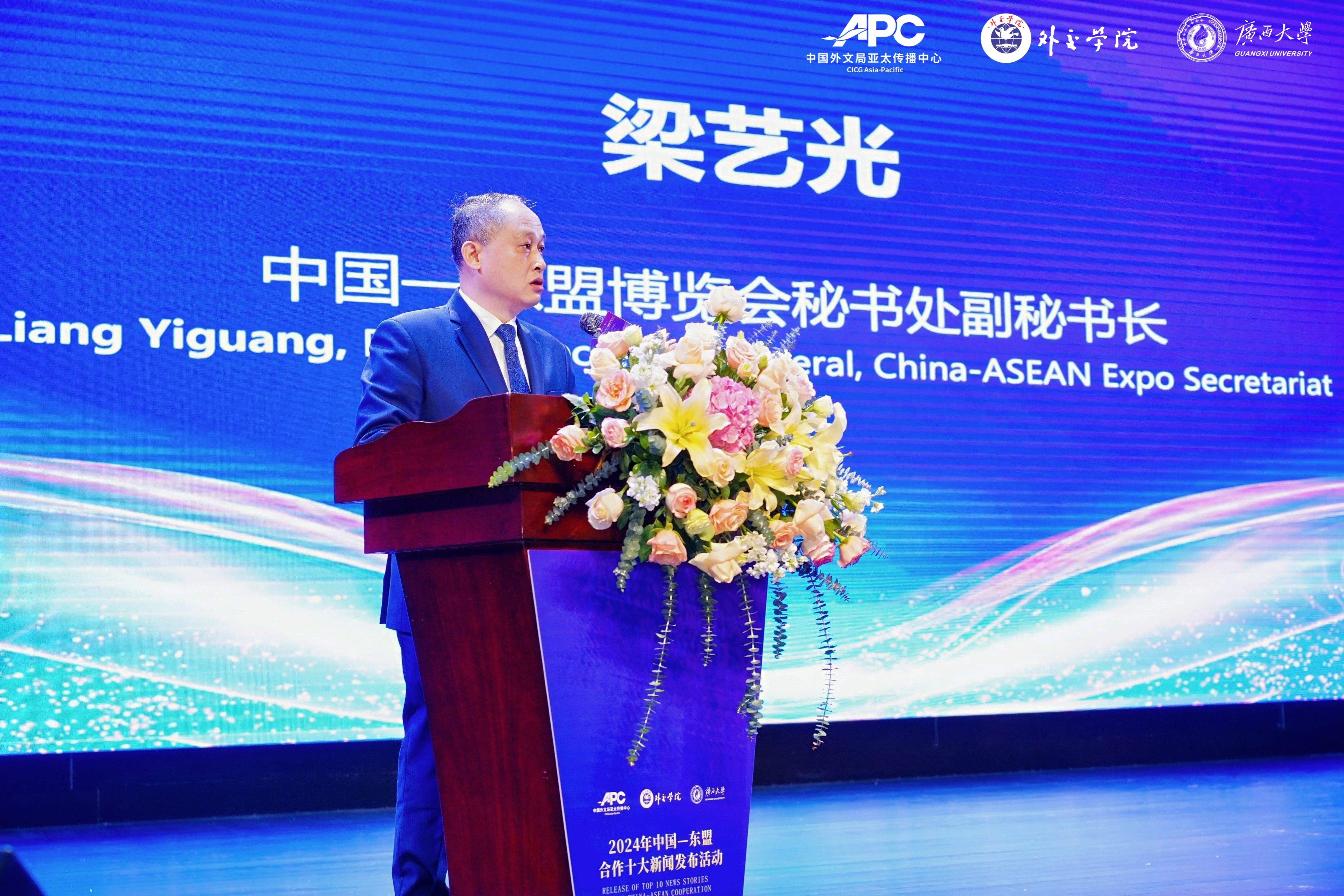
Xia Guoen mentioned that 2024 is the Year of China-ASEAN People to People Exchange, marking an important year for both sides to elevate their cooperation to new heights. China and ASEAN have achieved fruitful results in areas such as infrastructure connectivity, economic and trade cooperation, cultural exchange, technological innovation, and educational collaboration, providing strong momentum for regional peace and prosperity. At Guangxi University, all guests gathered together to witness the grand release event of the “Top Ten News Stories on 2024 China-ASEAN Cooperation” and to envision a bright future for China-ASEAN cooperation in 2025.
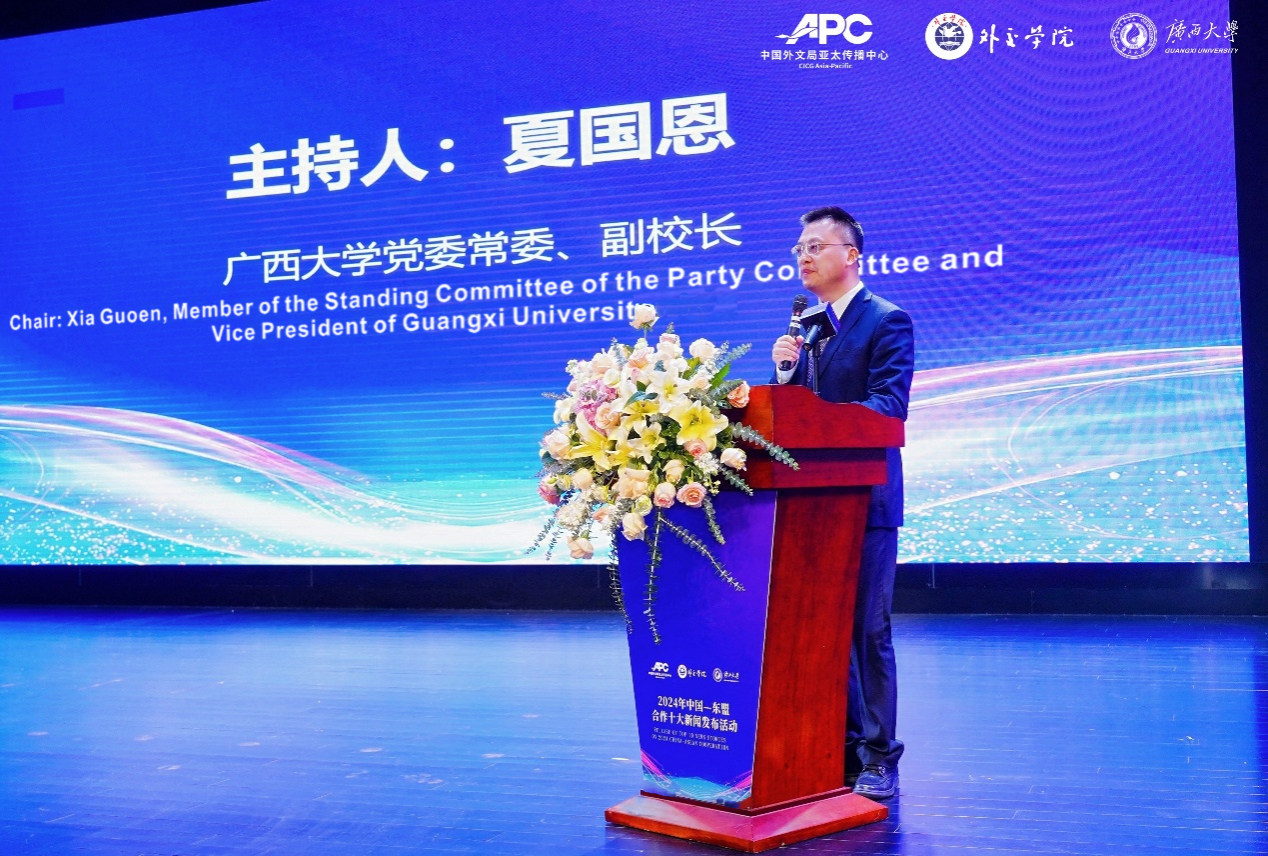
Experts from China and ASEAN countries provided comments and speeches on the “Top Ten News Stories on 2024 China-ASEAN Cooperation”. This selection was jointly compiled by the CICG Asia-Pacific and the Institute of Asian Studies of the China Foreign Affairs University, in collaboration with relevant academic institutions. It summarized the achievements of China-ASEAN cooperation over the past year in areas such as Head-of-State Diplomacy, Belt and Road cooperation, and other significant fields, showcasing the positive momentum and tremendous potential of China-ASEAN cooperation. The selection activity for “Top Ten News Stories on China-ASEAN Cooperation” has developed substantial brand influence across various sectors in China and ASEAN over the years.
The release event attracted over 300 participants and guests from government agencies, higher institutions, think tanks, and media from both China and ASEAN countries.
 Home
>
News & Events
>
News
Home
>
News & Events
>
News
 Home
>
News & Events
>
News
Home
>
News & Events
>
News




